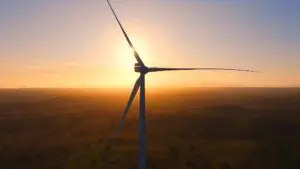 More reports that the federal Coalition government is seeking to take the “clean” out of the proposed clean energy target and try to find a way to structure it to support new coal-fired generators confirms the renewable energy industry’s worst fears.
More reports that the federal Coalition government is seeking to take the “clean” out of the proposed clean energy target and try to find a way to structure it to support new coal-fired generators confirms the renewable energy industry’s worst fears.
Namely, that Prime minister Malcolm Turnbull is seeking to achieve what his predecessor Tony Abbott only managed to do for a few years: bring an effective stop to large-scale wind and solar projects in Australia.
News reports this morning suggested that a revised policy had a simple goal: protect “baseload” coal and seek to limit the amount of renewable energy in the system to well below the 42 per cent contemplated by chief scientist Alan Finkel.
Let’s remember Finkel’s modest numbers included about 10 per cent for household and commercial rooftop solar, and so the share of large-scale renewable projects was imagined by Finkel at round 32 per cent by 2030, little more than business as usual and just an incremental gain from the 23.5 per cent required by the current renewable energy target by 2020.
If this 2030 target is lowered further by Turnbull’s political manoeuvrings, it suggests that he wants to do what Abbott failed to do: effectively kill the large-scale renewables sector, just as it becomes clear that wind and solar costs are way below those of new coal, or gas, or even the cost of extending the life of existing coal plants.
It is not yet clear how the Turnbull government could structure such a scheme, or how it could get it through parliament, although the compromises the Coalition struck with Labor on the CPRS in 2009 before it was finally dumped, and on the renewable energy target in 2015 might give them hope.
It could also be mere window dressing for the Nationals, grimly determined to prevent any new renewable energy investment and jobs in their electorates, and the right wing policy fringe dwellers – given ample voice in a three-page spread in The Australian today, and in most other editions.
Turnbull insists he is seeking to promote something that evidently doesn’t exist: “cheap and reliable” baseload energy. ITK analyst and RenewEconomy contributor David Leitch pulls those numbers and suppositions apart with deadly effect in this must-read analysis.
So much for Turnbull’s energy “trilemma” – it would be better served by renewables and storage, as anyone outside the ideological confines of the Murdoch press, the Institute of Public Affairs, or the Coalition’s right wing knows only too well.
Whatever the truth about the fate of Finkel’s CET, it does highlight that Turnbull is veering away from the recommendations of the Finkel Review.
It has supposedly adopted 49 of the 50 Finkel recommendations (with the exception of the CET), but in the past week it has trampled over some of the key ones by its deliberate misrepresentation of the two AEMO reports and its efforts to usurp the role of the Energy Security Board.
The ESB is designed to co-ordinate with AEMO and other key institutions to ensure that the lights stay on and enough dispatchable generation is in the system – both in coming summers and in the future – and provide advice so that policies and market rules are designed accordingly.
But as it met for the first time in Melbourne on Tuesday, the Coalition continued to misrepresent AEMO’s reports on dispatchability and grid security, and tried to force AGL Energy into keeping the Liddell coal generator open, or come up with its own plan to replace it.
That is not AGL’s role, or the government’s. It is AEMO’s role, in conjunction with the other members of the ESB, and its own expert panel.
And as AEMO boss Audrey Zibelman said on Tuesday: The message from its report on dispatchability was clear, it was about that very term, dispatchability, and that doesn’t include ageing coal-fired power plants.
Oliver Yates, the former head of the Clean Energy Finance Corp and a member of AEMO’s expert panel (listen to this excellent Energy Insiders podcast with panel chair Chloe Munro to understand its role) echoed the views of many in the industry in pleading for the government to allow AEMO to get on with its job.
“Just allow AEMO to get on with it as set out under the Finkel Review guidelines, then the government can back out of the way and let them get on with their job, which is to keep the lights on,” Yates told ABC Radio’s AM program.
And he pointed out how AEMO report’s had been misrepresented. “What they said was clear: If you want to do anything you need to have dispatchable capacity. That is not a baseload coal-fired power station – it has to be dispatched at any time.”
“Coal fired power stations .. will not respond the way as pumped hydro does, as batteries do, or demand response measures. It doesn’t suit the ever increasing dynamic market that we are moving into.”
It has already been made clear that Liddell is not only dirty, it is unreliable. AGL says so itself. It lost more than half of its capacity in last summer’s heatwave, just as the two biggest gas plants in the state also tripped, victims of heat-related problems.
Yet another report has been released by the Australian Energy Regulator that focuses on the failures of coal and gas generators in the heat, this time in Queensland on February 12, when five different “baseload” coal and gas generators shed a total of 790MW of capacity owing to heat-related technical issues and just as the state’s temperatures soared and demand hit record highs. And Queensland’s is a relatively young fleet.
As AEMO has made clear, ageing coal-fired generators do not meet the definition of a reliable, dispatchable source that it needs to call upon at these critical moments. Having a “baseload” coal generator capable of trundling through the night is next to useless if AEMO cannot call upon it at the critical peaks.
Leitch’s analysis says that not only are the coal-fired power stations unreliable, they are also costly – the fuel cost alone for Liddell and other plants suggests generation costs of at least $65/MWh. That is not cheap electricity.
Turnbull’s attempts to minimise the amount of large-scale wind and solar to please the Coalition’s dominant conservative faction is in contrast to the AEMO modelling, which shows that the risk of load shedding can be minimised under a modelled penetration of 45 per cent renewable energy.
Finkel’s proposal was already considered to be a watered down version of what was needed to address the climate issue, and was designed to be “political acceptable”.
Any serious attempts to meet the Paris target of keeping average global warming well below 2°C – and not just Australia’s initial downpayment – would result in a renewables share as high as 70 per cent.
But despite the declarations of the likes of Transgrid that even 100 per cent renewables is both feasible and affordable, the Coalition has apparently decided to erect policy road-blocks that would stop even the modest target being reached.
The irony is that Turnbull’s efforts to appease the conservatives means that Abbott appears to be having more impact from the back-bench than he did in government.
He succeeded in bringing investment in large-scale renewable energy to a halt for three years – one of the reasons why the lost capacity from Hazelwood closure is yet to be replaced – but the current boom in wind and solar is the result of his failure to kill the RET altogether, as he had wished.
As the build-out of wind and solar nears the level needed to meet the RET of 33,000GWh by 2020, any future investment in large-scale wind and solar will rely on other longer term policy measures, state-based targets like Victoria’s and Queensland (if it survives next year’s elections) and corporate demand.
Or, it could be promoted by a change in market rules, which currently favour the incumbents because they reward generators with low up front costs and high running costs, like the gas generators that currently set the market prices.
Efforts to change those market rules and encourage new technologies like battery storage have been delayed until mid 2021 at the earliest, and other rules that would encourage demand management, one of the favoured mechanisms of Zibelman to manage the grid, are also yet to be put into place.
The Clean Energy Council added its voice to the debate, saying that the solutions for Liddell are “here now and commercially feasible” and can minimise costs to consumers.
“Investors have made it clear that the future lies in these clean energy solutions rather than outdated and high-emissions coal-fired power which is becoming increasingly unreliable and expensive to operate,” CEC boss Kane Thornton said in a statement.
“International and local investors are currently committing more than $8 billion to Australia’s clean energy sector this year alone as a result of the bipartisan support for the 2020 Renewable Energy Target.
“But with no long-term policy in place beyond 2020, investors are becoming nervous and this uncertainty will stifle the advances Australia needs to create a clean, affordable energy system. The blame for Australia’s high-cost energy system lies in decades of policy uncertainty, not the introduction of low-emissions technology.”








